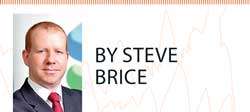24 May 2018 - {{hitsCtrl.values.hits}}
 Everyone wants definitive answers or the ‘the truth’. This is especially the case in the investment world, where people are vying to make correct predictions about the future. We all prefer to listen to people who appear confident about the outlook. Yet, research suggests these are the very same people we should be sceptical about. This is because the apparently ‘confident’ forecasters are less willing to embrace that they do not know what is going to happen.
Everyone wants definitive answers or the ‘the truth’. This is especially the case in the investment world, where people are vying to make correct predictions about the future. We all prefer to listen to people who appear confident about the outlook. Yet, research suggests these are the very same people we should be sceptical about. This is because the apparently ‘confident’ forecasters are less willing to embrace that they do not know what is going to happen.
The reality is that the truth is complex and does not fit on the back of a postage stamp. The human brain, despite its remarkable evolution, is not great at making decisions, especially when the situation is complex and uncertain, as is the case for financial markets.
We have an inherent need for an easily understandable and explainable story and this undermines our ability to get to the truth. One example of this in the financial world is the oft-quoted relationship between the rising US interest rates and a strengthening US dollar, which in itself sounds intuitive. In reality, the US dollar has weakened around two-thirds of the time during the US rate hiking cycles.
Part of the disconnect arises because it is the relative rise in the US real (or inflation-adjusted) interest rate differentials versus other major currencies that drives the value of the US dollar, rather than merely what the US Fed is doing. And even then, there can be other factors (e.g. trade tensions and external imbalances) that dominate these forces to drive the dollar. This is the truth and it is complex.
So, what can investors do to make better decisions?
First, there are proven methods we can employ to try to make better decisions, both as individuals and groups. Indeed, one can think about the average error of a group of individuals, such as an investment committee, as the sum of individual errors minus the diversity of those views. Therefore, we should do everything we can to try to reduce individual errors while maximising the diversity of the individuals within the committee.
In order to minimise individual errors, the key is to try to address the behavioural biases that we all face. For instance, confirmation bias – the psychological preference to read something that we agree with and something that social media algorithms are making much harder to avoid – can be mitigated by ensuring that the members are presented with arguments that challenge their understanding.
Anchoring – where individuals focus too much on an initial piece of information when making decisions – can be addressed by searching for ‘smart anchors’ which provide the probabilistic perspective on different outcomes based on historical experience of events similar to the one being analysed – e.g. stage of the economic cycle, valuations, policy divergence and the like.
In terms of maximising diversity of views, a committee-based approach to decision-making (as opposed to individual-driven decisions), helps uncover different perspectives. Membership of such a committee must be varied in terms of expertise, geographical experience and ways of thinking. Once this is ensured, the committee members need to absorb all available information and analysis – regardless of the source – which are pertinent to the decision at hand.
Second, we need to think in terms of probabilities, rather than trying to definitively predict the markets. Doing so opens one’s mind to alternative scenarios and forces us to accept that our current view of the world may be wrong.
Finally, since nobody can possibly know for sure what is going to happen, we need to invest with several scenarios in mind.
Today, our central scenario remains for global equities to make new highs as we believe we are still in the late stage of the economic cycle, with the risk of a recession in the next 12 months hovering around 20-25 percent. Normally, equity markets do well in the late stage of a cycle before the economy overheats, forcing central banks to tighten monetary policy aggressively. Moreover, historically, equities have normally generated positive returns from current valuations on a 12-month time horizon.
However, we cannot ignore the risks that inflation will pick up more rapidly than expected, especially with the US unemployment rate falling below 4 percent or that trade tensions could escalate, leading to a slowdown in economic activity. As such, we believe it is getting increasingly important to diversify investments, especially after bond yields have risen markedly over the
past six months.
And therein lies the truth.
One of my favourite movie scenes is from ‘A Few Good Men’ when Lieutenant Kaffee (played by Tom Cruise) gets Colonel Jessup (Jack Nicholson) to admit he ordered the Code Red that (accidentally) killed Private Santiago. Colonel Jessup says: ‘You can’t handle the truth’ of needing people like him to defend the country. The truth in the investment world is: ignore the confident voices, take calculated risks with an unbiased mindset based on probabilities of various outcomes and always hedge your bets.
(Steve Brice is Chief Investment Strategist at Standard Chartered Private Bank)
18 Nov 2024 1 hours ago
18 Nov 2024 2 hours ago
18 Nov 2024 2 hours ago
18 Nov 2024 2 hours ago
18 Nov 2024 2 hours ago